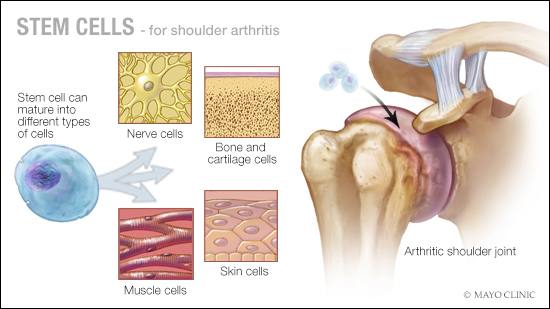Table of Contents

[/image][=video]
[/video]
There are many kinds of stem cells. As a whole, the term stem cell refers to a classification of cells that trigger other cells (like skin, blood, heart, and muscular tissue cells) by replicating and differentiating in response to chemical cues. Totipotent stem cells appear at the earliest phase of development and are the only stem cells which can create beginning stem cells and the placenta.
Bone marrow transplant (BMT) is an unique treatment for people with specific cancers cells or other diseases. A bone marrow transplant entails taking cells that are generally located in the bone marrow (stem cells), filtering those cells, and providing back either to the contributor (patient) or to another individual. The objective of BMT is to transfuse healthy bone marrow cells right into an individual after his/her very own unhealthy bone marrow has been treated to kill the irregular cells.
Bone marrow is the soft, mushy cells discovered inside bones. It is where many of the body's blood cells create and are stored. The blood cells that make various other blood cells are called stem cells. The most primitive of the stem cells is called the pluripotent stem cell. This is different than other blood cells when it come to the complying with residential or commercial properties: It has the ability to reproduce another cell the same to itself.
It is the stem cells that are required in bone marrow transplant. The objective of a bone marrow transplant is to cure numerous diseases and types of cancer cells. When the doses of chemotherapy or radiation needed to treat a cancer are so high that a person's bone marrow stem cells will certainly be permanently damaged or damaged by the treatment, a bone marrow transplant may be needed.
Perimenopause Treatment
This procedure is frequently called rescue. Replace bone marrow with genetically healthy functioning bone marrow to stop more damages from a genetic illness process (such as Hurler's disorder and adrenoleukodystrophy). The dangers and benefits need to be weighed in a comprehensive discussion with your medical care carrier and experts in bone marrow transplants before the procedure.
There are different sorts of bone marrow transplants depending on that the benefactor is. The various sorts of BMT consist of the following: The donor is the person himself or herself. Stem cells are extracted from the person either by bone marrow harvest or apheresis (a process of collecting peripheral blood stem cells), frozen, and after that repaid to the patient after extensive therapy.
The donor shares the very same hereditary kind as the client. Stem cells are taken either by bone marrow harvest or apheresis from a genetically matched donor, normally a bro or sibling. Various other benefactors for allogeneic bone marrow transplants might consist of the following: A haploid-identical match is when the benefactor is a moms and dad and the hereditary suit goes to the very least half similar to the recipient.

Matching involves inputting human leukocyte antigen (HLA) tissue. The antigens externally of these unique leukocyte figure out the hereditary make-up of a person's body immune system. There are at least 100 HLA antigens; however, it is believed that there are a couple of significant antigens that identify whether a donor and recipient suit.
Medical research study is still examining the function all antigens play in the procedure of a bone marrow transplant. The more antigens that match, the much better the engraftment of donated marrow. Engraftment of the stem cells occurs when the given away cells make their way to the marrow and begin making new members cells.
Perimenopause Treatment
All people function together to offer the ideal chance for a successful transplant. The group consists of the following: Medical care suppliers that specialize in oncology, hematology, immunology, and bone marrow transplantation.
Specialists that will aid you satisfy your nutritional needs before and after the transplant. They will work closely with you and your family. Specialists that will help you end up being strong and independent with activity and endurance after the transplantation. Chaplains who give spiritual care and assistance. A number of other team participants will review you prior to transplant and will give follow-up care as needed.

A complete medical history and physical examination are performed, consisting of several tests to review the person's blood and body organ features (for example, heart, kidney, liver, and lungs). A patient will usually enter the transplant center approximately 10 days prior to transplant for hydration, evaluation, positioning of the main venous line, and other prep work.
For an allogeneic transplant, an appropriate (tissue entered and matched) benefactor has to be offered. Volunteer marrow benefactors are signed up in numerous national and global computer registries.
Contributor resources offered include: self, sibling, moms and dad or relative, nonrelated individual, or umbilical cable from a related or nonrelated individual. There are nationwide and global registries for nonrelated individuals and cord blood.
Menopause Treatment in Battle Creek, Michigan
Examinations associated with his or her health and wellness, exposure to infections, and genetic analysis will be done to establish the extent of the suit. The contributor will be offered guidelines on just how a bone marrow donation will be made. When a match for a person requiring a bone marrow transplant is found, after that stem cells will certainly be collected either by a bone marrow harvest.
Or by an outer blood stem cell collection. This is where stem cells are accumulated from the flowing cells in the blood. Of both, outer blood stem cell contributions are currently extra typical. Cord blood has currently been accumulated at the time of a birth and stored for later use.
Navigation
Latest Posts
Hormone Therapy
Menopause Treatment
Menopause Treatment servicing Battle Creek